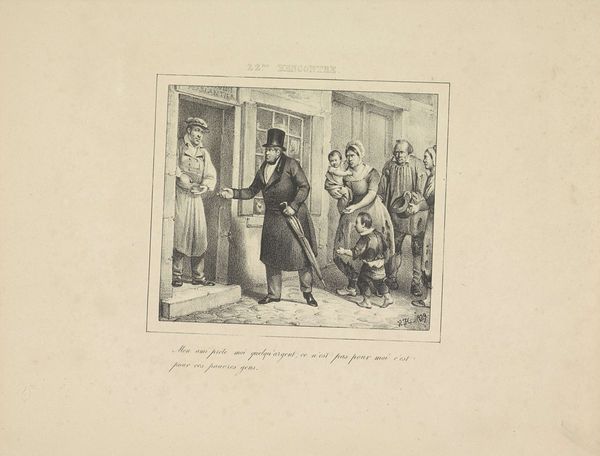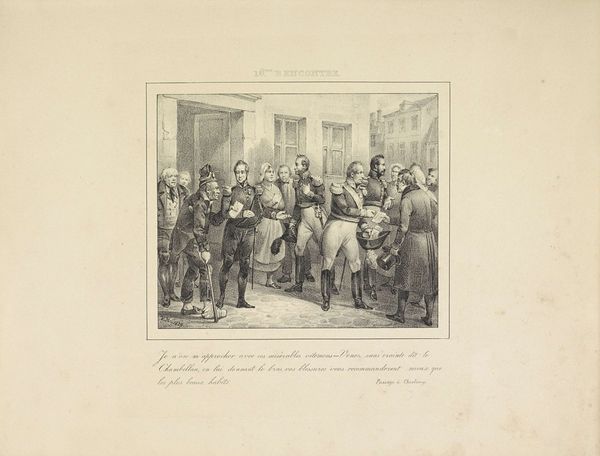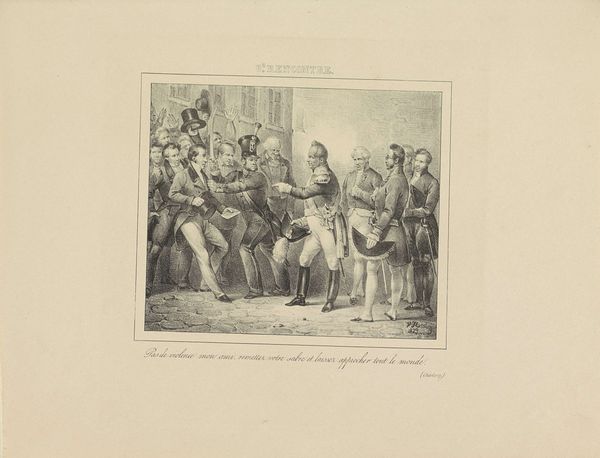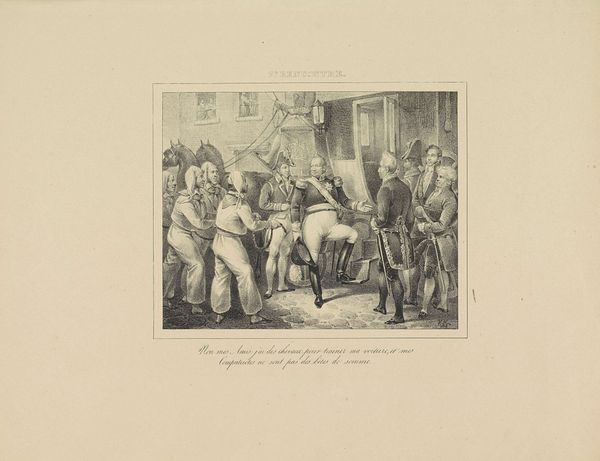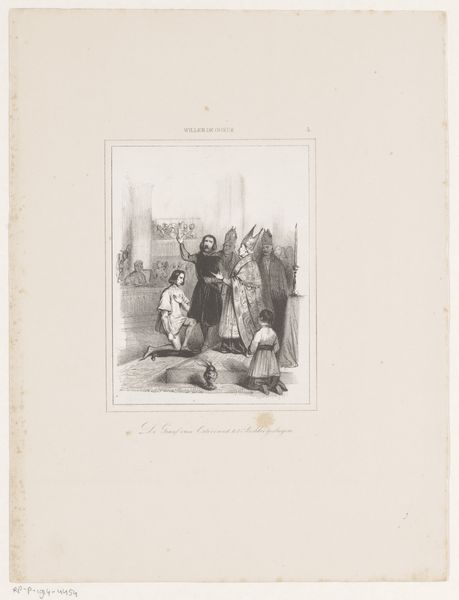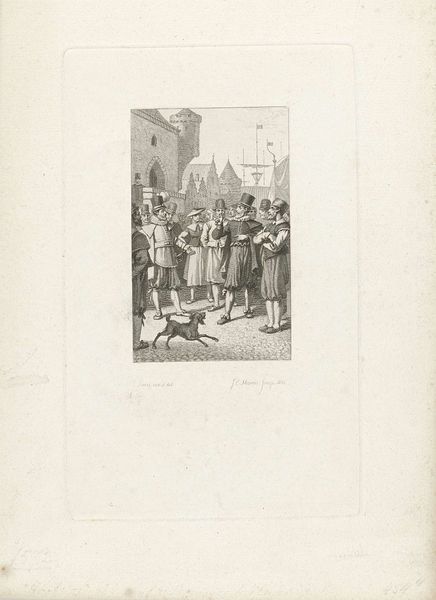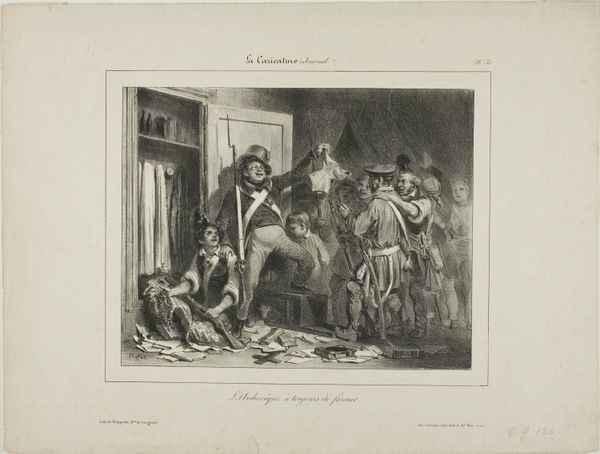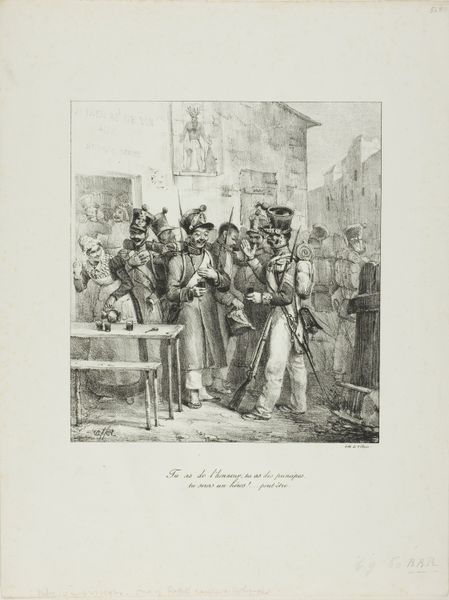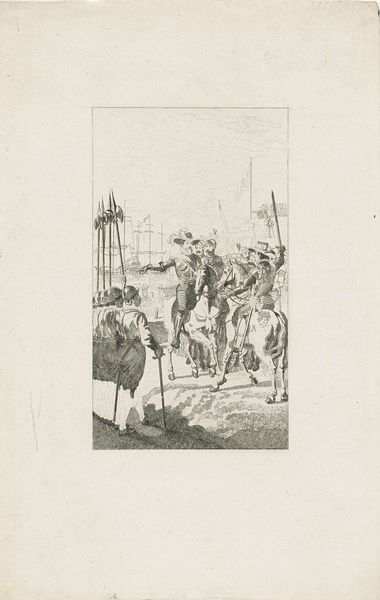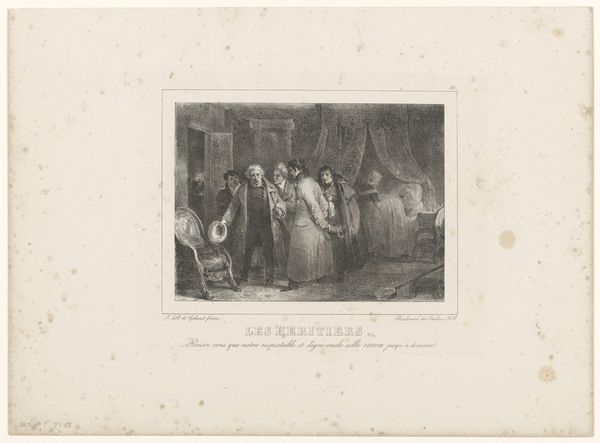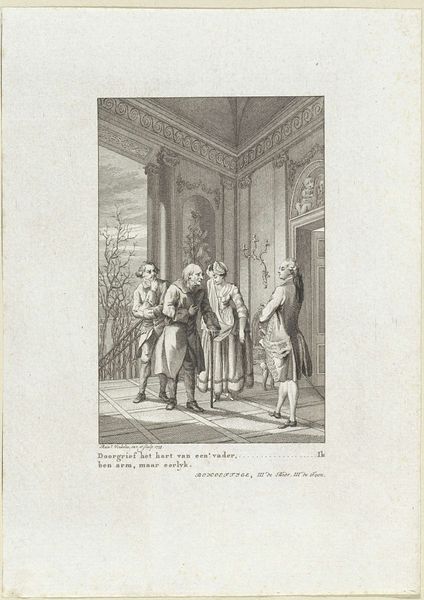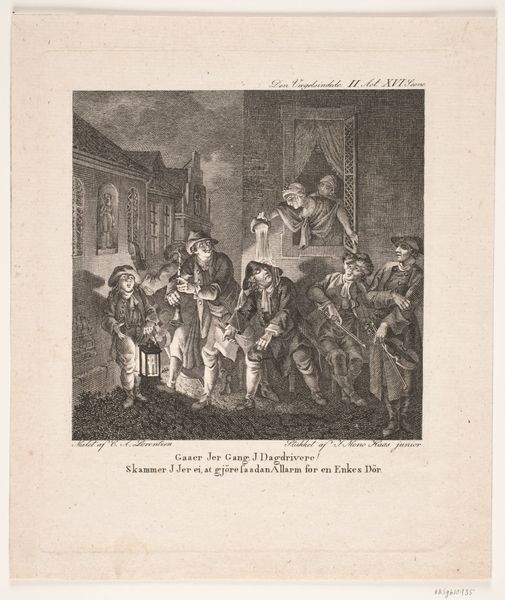
print, engraving
#
portrait
#
neoclacissism
# print
#
old engraving style
#
history-painting
#
engraving
Dimensions: height 235 mm, width 305 mm
Copyright: Rijks Museum: Open Domain
Editor: This is "Willem accepteert op verzoek de Nederlandse kroon," or "William accepts the Dutch crown on request," from 1829 by Jean-Louis Van Hemelryck, created as an engraving. It's quite formal and the lines are very precise. What catches your eye when you look at it? Curator: My attention is drawn to the composition, specifically the strategic arrangement of figures in relation to the architectural backdrop. Consider how the artist positions Willem at the fulcrum of this composition, both visually and symbolically accepting power. Notice how the linear precision of the engraving underscores the formality of the moment. Are there any recurring geometric forms that suggest stability? Editor: Well, the building behind them looks very stable with those rectangular windows, but Willem himself looks almost reluctant. Is that part of the symbolism or is that just me reading too much into it? Curator: Observe how the artist has employed light and shadow, not merely to define form but to convey meaning. Is there a play of light upon certain figures, suggesting enlightenment or divine right, or perhaps simply highlighting their importance? Consider how the limited tonal range contributes to the overall emotional tone. How does it affect your interpretation of the subjects' demeanor? Editor: I see what you mean about the light on Willem. The limited shading, along with the architectural structure, brings more gravitas to the historical event, more serious in tone and presentation. Curator: Precisely. We can focus less on who created this print, its context, and instead study the structural organization for its full meaning. Are you perhaps perceiving the effect of neoclassical art through the formal arrangement of the print? Editor: Oh, yes, absolutely. Thanks for pointing that out – the formal elements really bring that to life. Curator: It is a privilege to analyze the print's internal logic. We see how the artwork gains significant substance and visual authority just through the study of form, line, composition, and geometric design. Editor: Thanks, I learned so much more about it that way.
Comments
No comments
Be the first to comment and join the conversation on the ultimate creative platform.
